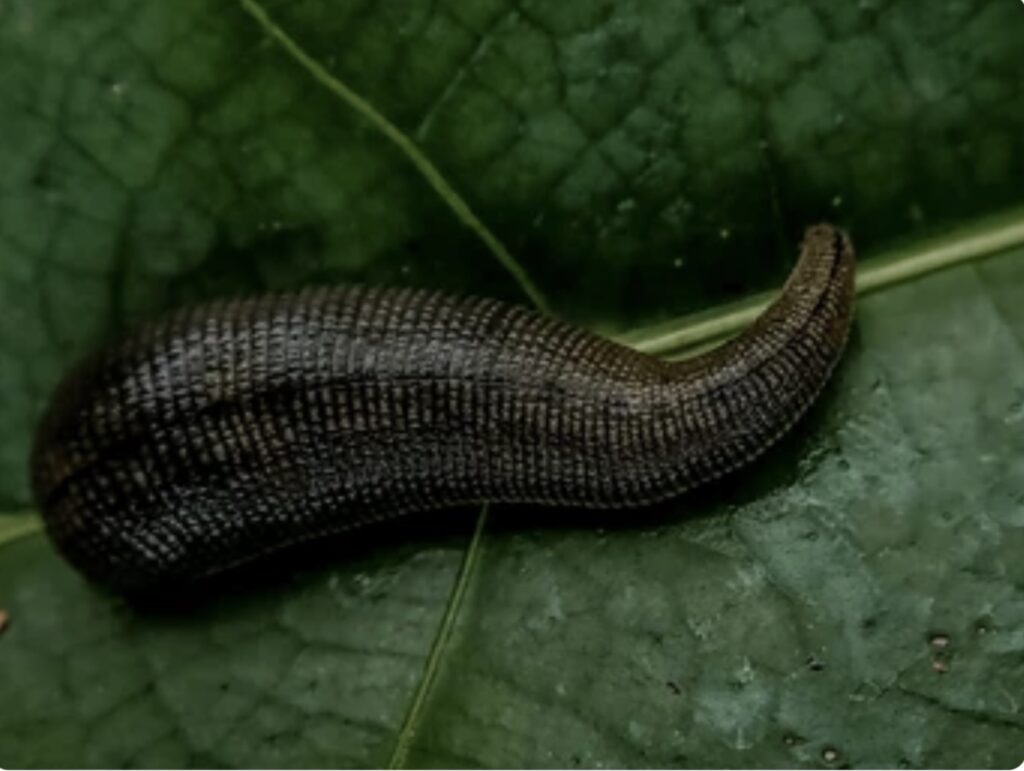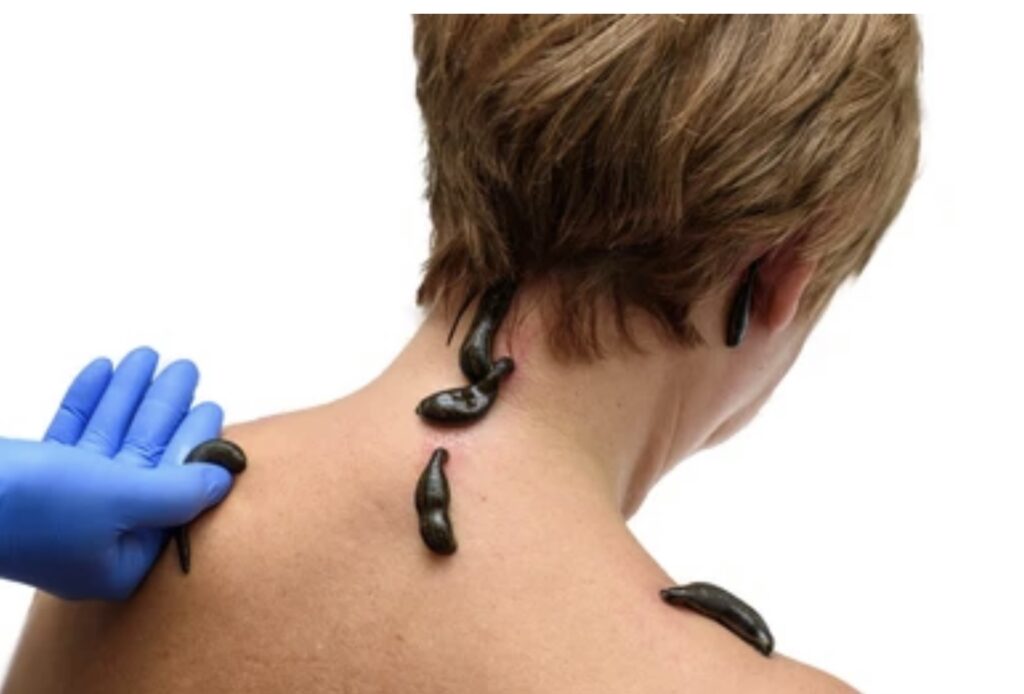Introduction
ANATOMY AND PHYSIOLOGY OF LEECHES: Leeches are a fascinating group of segmented worms belonging to the class Hirudinea within the phylum Annelida. These organisms are known for their specialized adaptations and unique lifestyle, ranging from freshwater species to parasitic forms found in a variety of hosts. Although they are often associated with bloodsucking behavior, leeches also play important ecological roles and are used in modern medicine. This article will explore the biology, behavior, ecological importance, medicinal uses, and evolutionary aspects of leeches, providing a detailed understanding of these intriguing creatures.
What Are Leeches?

Leeches are soft-bodied, elongated invertebrates with a segmented structure, similar to earthworms, but with distinct differences. While most leeches are freshwater organisms, they can also be found in terrestrial and marine environments. They belong to the subclass Hirudinea and are members of the larger phylum Annelida, which also includes earthworms and polychaetes.
Leeched bodies are typically flattened dorsoventrally (from top to bottom) and possess two suckers—one at the anterior (head) end and another at the posterior (tail) end. These suckers serve various purposes: the anterior sucker is used for attachment to hosts or surfaces, while the posterior sucker helps the leech move and anchor itself. Leeches range in size from a few millimeters to over 30 centimeters in length, depending on the species.
Anatomy and Physiology of Leeches

Leeches are distinguished from other annelids by their unique body structure and physiology. Some of the key features include:
Body Segmentation:
- Leeches have a segmented body, but unlike earthworms, their segmentation is not externally visible due to a smooth and often leathery appearance. Their body segments are internally divided, contributing to their flexibility and ability to extend and contract.
Suckers:
- The anterior sucker contains a set of teeth or a proboscis used for attaching to surfaces or hosts. This is critical in parasitic species that attach to prey to feed.
- The posterior sucker functions to anchor the leech to a surface or substrate, providing stability when the leech is moving or feeding.
Feeding Apparatus:
- Many leech species are parasitic and feed on the blood of animals, including mammals, amphibians, and fish. They have specialized jaws or proboscises capable of cutting through skin and sucking blood. These jaws often contain sharp teeth to help pierce the skin of their hosts.
- Leeches secrete anticoagulants such as hirudin during feeding, which prevents blood from clotting while they feed, allowing them to consume large quantities of blood over extended periods.
Respiration:
- Most leeches breathe through their skin, absorbing oxygen directly from the surrounding water or air. Some species, particularly those in aquatic environments, may also possess specialized structures that help with gas exchange.
Nervous and Circulatory Systems:
- Leeches have a well-developed nervous system, which includes a pair of nerve cords that run along the length of their body, connected by transverse nerves. Their circulatory system is open, meaning blood is not confined to vessels but flows freely in the body cavity (coelom).
Ecological Role of Leeches
Leeches are important components of ecosystems and contribute to biodiversity in several ways:
Parasites and Predators:
- Parasitic leeches are often found in aquatic habitats where they feed on fish, amphibians, and reptiles. Their feeding habits can influence the health of these populations by acting as parasites. Some species are host-specific, while others may feed opportunistically on a range of animals.
- Non-parasitic leeches, however, are predatory, feeding on smaller invertebrates such as worms and insects. These species contribute to controlling the populations of other invertebrates and play a role in maintaining ecological balance.
Decomposers:
- Leeches that feed on detritus, decaying organic matter, or smaller invertebrates serve as decomposers in ecosystems. They break down organic materials, aiding in nutrient cycling and promoting the overall health of the ecosystem.
Biodiversity Indicators:
- Leeches are often used as bioindicators of water quality in freshwater environments. Their presence or absence can provide clues about environmental changes, pollution, and habitat degradation. Some species of leeches are sensitive to changes in water temperature, pH, and dissolved oxygen levels, making them useful tools for monitoring aquatic ecosystems.
Types of Leeches
Leeches can be categorized based on their feeding behavior, habitat, and lifestyle:
Parasitic Leeches:
- These are the most well-known type of leech, commonly associated with bloodsucking behavior. Parasitic leeches attach to their hosts using their anterior sucker, where they pierce the skin and feed on blood. They secrete an anticoagulant to keep the blood flowing while feeding, sometimes for hours or days. Examples of parasitic leeches include Hirudo medicinalis (the medicinal leech) and various species of aquatic leeches.
Predatory Leeches:
- Unlike their parasitic relatives, predatory leeches do not feed on blood but instead hunt smaller invertebrates. They possess specialized mouthparts for capturing and consuming their prey, such as smaller worms and insect larvae. Examples include the Rhyacobdella species, which can be found in fast-moving streams.
Detritivorous Leeches:
- These leeches feed on decomposing organic matter and detritus in aquatic environments. They help break down and recycle nutrients, contributing to the health of ecosystems. These species are less common but play a critical role in nutrient cycling.
Medicinal Leeches

One of the most well-known uses of leeches in human history is their role in medicine. Leeches, particularly Hirudo medicinalis, have been used for centuries in bloodletting practices. Historically, leeches were applied to patients to balance the humors, a concept of ancient medicine. In modern times, however, the use of medicinal leeches has been refined and scientifically justified, particularly in reconstructive surgery and microvascular surgeries.
Medical Uses of Leeches:
- Reconstructive Surgery: Leeches are used in microsurgery to help restore blood flow in reattached body parts, such as fingers or ears. After surgery, a leech can be applied to the site of injury, where it helps to remove pooled blood from the tissue and promote the growth of new blood vessels.
- Anticoagulants: The saliva of leeches contains anticoagulants, most notably hirudin, which prevents blood from clotting during the feeding process. This can be beneficial in surgical settings where controlling blood flow is critical.
- Venous Congestion: In some cases, leeches are used to treat venous congestion in patients who have undergone reconstructive surgeries. By removing excess blood from the site, leeches help alleviate pressure and improve circulation.
Scientific Research:
- The anticoagulant properties of leech saliva, especially hirudin, have been extensively studied in pharmacology. Hirudin has been developed into synthetic drugs for use in medical treatments, particularly for conditions like deep vein thrombosis and heart attacks.
- Leech saliva also contains a variety of bioactive compounds that can be used to investigate the mechanisms of blood clotting, inflammation, and tissue repair.
Evolutionary Biology of Leeches
Leeches have evolved from early annelid ancestors and exhibit a variety of specialized traits. The evolutionary history of leeches is complex and involves a range of adaptations to their parasitic, predatory, and detritivorous lifestyles.
Phylogenetics:
- Leeches are part of the Annelida phylum, which also includes earthworms and polychaetes. While all annelids share a segmented body structure, leeches have evolved unique features that set them apart, such as the development of suckers and a reduced internal segmentation. Genetic studies have shown that leeches are most closely related to certain marine annelids, including the polychaetes, and that their parasitic behaviors likely evolved relatively recently in evolutionary terms.
Adaptations:
- The evolution of blood-feeding behavior in leeches is thought to have originated in freshwater environments. Leeches’ ability to secrete anticoagulants and their specialized mouthparts for piercing the skin of their hosts are key adaptations that enable their parasitic lifestyle.
- Leeches’ ability to regenerate lost segments, a trait shared by some annelids, suggests that these organisms have evolved sophisticated repair mechanisms, which may play a role in their survival in the wild and in medical treatments.
Conclusion
Leeches are remarkable creatures that have evolved a range of specialized adaptations to thrive in diverse environments. From their role as blood-feeding parasites to their use in modern medicine, leeches offer unique insights into evolutionary biology, ecology, and human health. While often associated with bloodsucking, many species of leeches are non-parasitic and play important roles in nutrient cycling and the maintenance of ecosystem health. The study of leeches continues to provide valuable knowledge in various scientific disciplines, from pharmacology and ecology to medical applications. Whether as ecological predators or medicinal tools, leeches remain a vital and fascinating group within the animal kingdom.
Discover more from ZOOLOGYTALKS
Subscribe to get the latest posts sent to your email.


